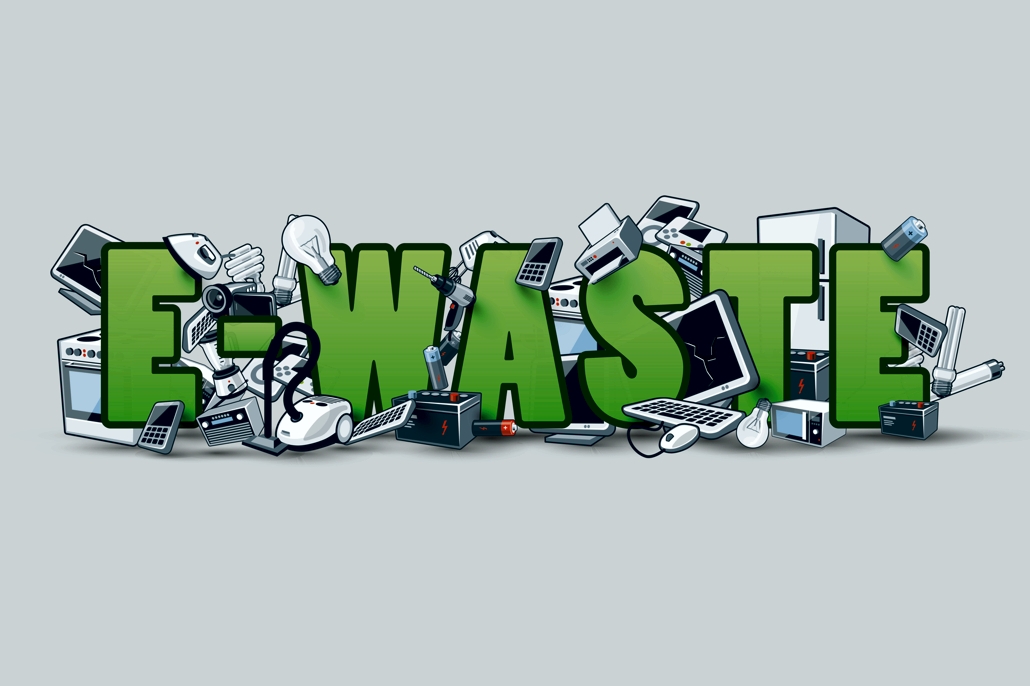News Highlight
The hoarding of small, unused, dead, or broken plug-in and battery-operated products is the focus of this year’s 5th annual International E-Waste Day.
International E-Waste Day
- About
- It is held on October 14 every year as an opportunity to reflect on the impacts of e-waste.
- International E-Waste Day was developed in 2018 by the WEEE Forum to raise the public profile of waste electrical and electronic equipment recycling and encourage consumers to recycle.
What is e-waste?
- Electronic waste describes discarded electrical or electronic devices.
Electronic waste in India
- Electronic waste is one of the fastest-growing waste streams in the country.
- The Ministry of Environment, Forest and Climate Change estimates that 7,70,000 tons of Electronic waste were generated in 2018-19 and about a million tons in 2019-20.
- It is growing in India at the rate of 10%.
- Primary recycling of Electronic waste is carried out in the non-formal sector using primitive and hazardous methods.
- Adequate legislative measures and cost-effective, environmentally friendly technological solutions would be needed to address the issue.
Challenges associated with E-waste Management in India
- Volume generated –
- India stands fifth in e-waste generation producing around 1.7 lakhs metric tonnes per annum
- Involvement of Child Labour-
- About 4.5 lakh child labourers in the age group of 10-14 are observed to be engaged in various Electronic waste activities and that too without adequate protection and safeguards in various yards and recycling workshops.
- Lack of infrastructure-
- There is a considerable gap between present recycling and collection facilities and the quantum of Electronic waste that is being generated.
- No collection and take-back mechanisms are in place. There is a lack of recycling facilities.
- Health hazards
- E-waste contains over 1,000 toxic materials, which contaminate soil and groundwater. Exposure can cause headaches, irritability, nausea, vomiting, and eye pain.
- Lack of incentive schemes-
- No clear guidelines exist for the unorganised sector to handle E-waste. Also, no incentives are mentioned to lure people engaged in adopting a formal path for handling E-waste.
- E-waste imports –
- Cross-border flow of waste equipment into India- 80 per cent of E-waste in developed countries meant for recycling is sent to developing countries such as India, China, Ghana and Nigeria.
E-waste Management Rules, 2016
- The Ministry of Environment notified the E-Waste Management Rules, 2016, in March 2016 in supersession of the e-waste (Management & Handling) Rules, 2011.
- Goods covered under the act
- The new E-waste regulations added Compact Fluorescent Lights (CFLs), other mercury-containing lamps, and other similar devices, tightening the standards.
- Extended Producer Responsibility
- For the first time, the rules brought the producers under Extended Producer Responsibility (EPR), along with targets.
- Producers have been made responsible for E-waste collection and its exchange.
- Producer Responsibility Organisation (PRO)
- Different producers can each establish their Producer Responsibility Organisation (PRO) to handle the collection and environmentally responsible disposal of e-waste.
- Deposit Refund Scheme introduced
- Under this scheme, the producer charges a deposit in addition to the price of the electrical and electronic equipment at the time of sale and returns it to the customer, along with interest, when the end-of-life electrical and electronic equipment is returned.
- Role of State government
- State governments now have a role in ensuring the welfare, skill advancement, and safety of the labourers engaged in recycling and dismantling operations.
- Urban Local Bodies (Municipal Committee/Council/Corporation) have been assigned the duty to collect and channelise the orphan products to authorised dismantlers or recyclers.
- Punishment
- Additionally, a rule-violation punishment provision has been implemented.
Other laws relating to waste management.
- Tran’s boundary movement of e-waste is covered under the Basel convention.
- India ratified the convention in 1992.
- Environment (Protection) Act, 1986
- This Act, being umbrella legislation, dealt indirectly with e-waste as it deals with hazardous substances.
- Hazardous Waste Management and Handling Rules 1989,
- Rules were amended later in the years 2000, and 2003 and with final notification of the Hazardous Waste Management, Handling and Transboundary Movement Rules, 2008.
- Electronic waste management and handling Rules in 2011
- These rules were transported to tackle the safety and environment-friendly management, transporting, storing, and recycling of e-waste and also to diminish the usage of hazardous substances during the manufacturing of electrical and electronic equipment
Content Source: Down to earth



